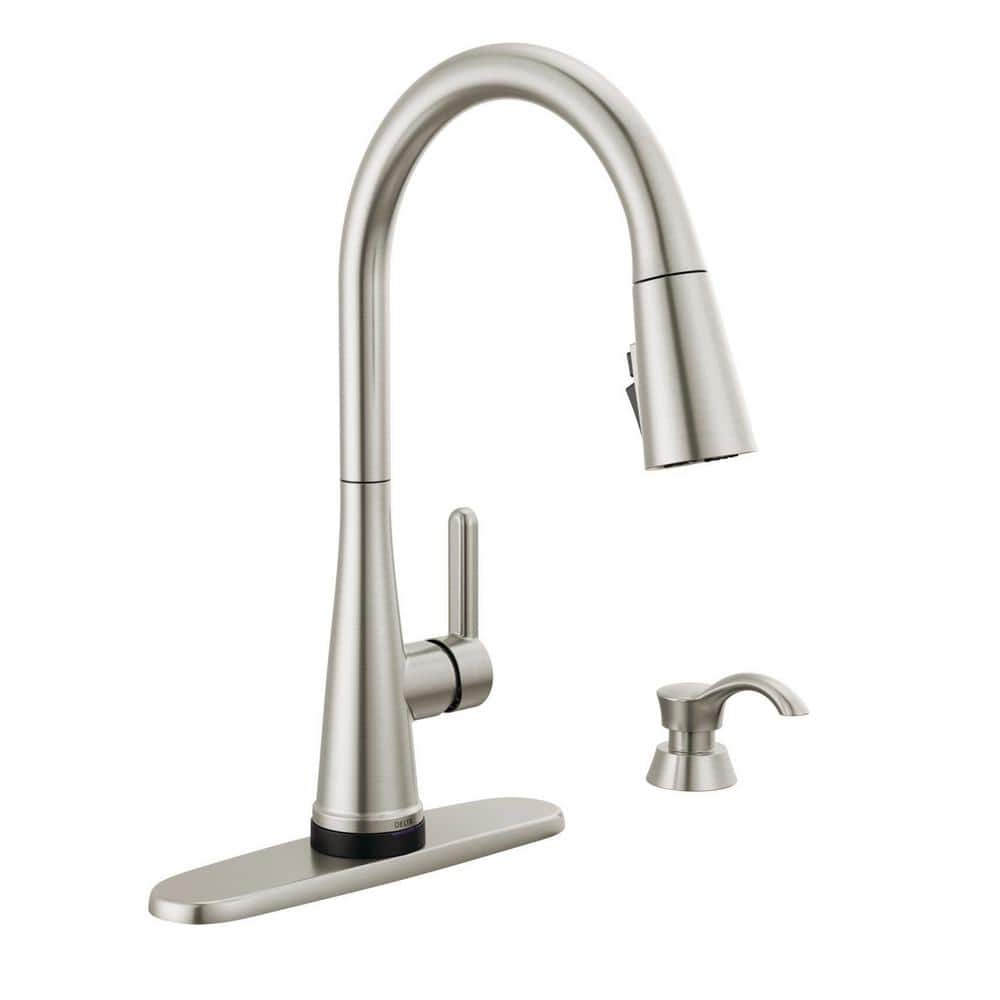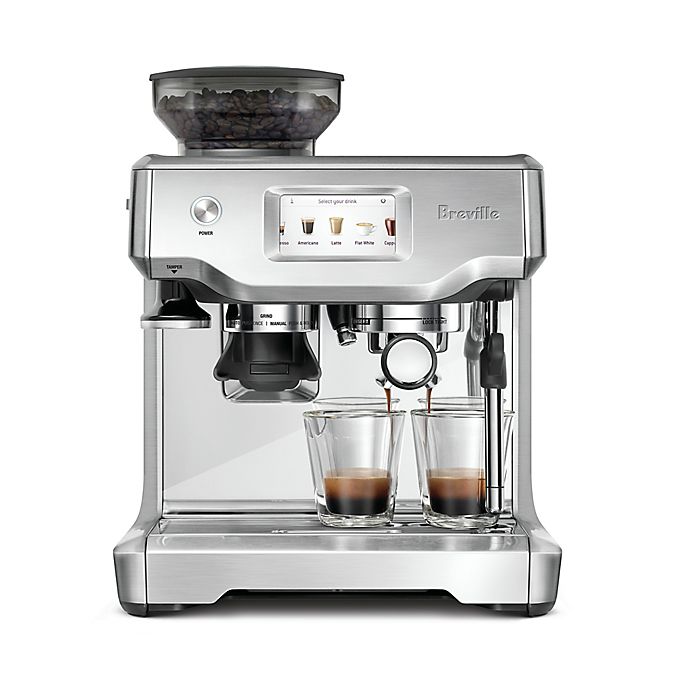Delta Greydon Touch2O Single Handle Pull Down Sprayer Kitchen Faucet with ShieldSpray Technology in SpotShield Stainless Steel
Single-hole, 2, 3 or 4-hole installation (deck plate included). Delta Touch2O technology: touch kitchen faucet on, touch it off. Delta MagnaTite docking holds pull down sprayer firmly in place.
The Greydon Kitchen Faucet was designed with a clean, transitional shape to fit any kitchen setting and includes thoughtful innovations to enhance everyday use. Touch it on. Touch it off. Whether you have two full hands or 10 messy fingers, Delta Touch2O Technology helps keep your kitchen faucet clean, even when your hands aren’t. A simple touch anywhere on the spout or handle with your wrist or forearm activates the flow of water at the temperature where your handle is set. The Delta TempSense LED light changes color to alert you to the water’s temperature and eliminates any possible surprises or discomfort. You can install with confidence, knowing that Delta kitchen faucets are backed by our Lifetime Limited Warranty. Electronic parts are backed by our 5-year electronic parts warranty.
- With Touch2O Technology, a simple touch anywhere on the spout or handle will start and stop the flow of water
- Helps keep your faucet cleaner, because washing the mess off your hands shouldn’t involve making a mess of your faucet
- Integrated TempSense LED light shows water temperature, changing from blue to magenta to red as temperature increases
- Requires 6 AA (included) or 6 C batteries
- MagnaTite Docking uses a powerful integrated magnet to snap your faucet spray wand precisely into place and hold it there so it stays docked when not in use and doesn’t droop over time
- ShieldSpray Technology powers off the mess without making a mess
- Concentrated stream cuts through messes and innovative water shield reduces splatter
- SpotShield Technology helps your faucet stay cleaner, longer by resisting water spots and fingerprints
- Soft, rubber Touch-Clean spray holes allow you to easily wipe away calcium and lime buildup with the touch of a finger
- DIAMOND Seal Technology is less hassle to install and helps your faucet perform like new for life, reducing leak points and lasting twice as long as the industry standard
- Everything you need is together in one convenient box, including integrated InnoFlex PEX supply lines
- Includes coordinating soap dispenser
- Fits 1, 2, 3, or 4-hole installations with optional soap dispenser and deck plate (both included)
- Optional deck plate included for use with additional mounting configurations and a cohesive look
- Intuitive Touch2O Technology can sense the difference between a touch and a grab, reducing the chances of false activation
- LED light signals blue when touch mode is active and flashes red when batteries are running low
- Automatic water flow shut-off after four minutes helps conserve water
- Optional A/C adapter EP102157 may be ordered separately
Additional information
| Connection size (in.) | 3/8 In. |
|---|---|
| Extended Hose Length (in.) | 20 |
| Faucet Height (in.) | 16.5 |
| Spout Height (in.) | 9 |
| Certifications and Listings | ADA Compliant, CSA Certified |
| Manufacturer Warranty | Electronic Faucet 5-year Limited Warranty |






by Chris
This is a great faucet. Works well.
by Erik
Was very easy to install. Instructions were detailed for people with no experience. Works great for what it is, only 4 stars because the price is very high. The touch on and off works as intended.
by John
I absolutely love the touch feature, no more dirty hands on the controls or hands dripping all over the back of the sink. I thought it was silly at first, but now I think it’s great.
by Steve
Solid quality and a nice clean look. We are happy so far.
by David
I just installed this faucet. I found the installation instructions to be clear and easy to follow. The installation was smooth and the faucet was up and running in no time. The faucet design is pleasant. It has a temperature light which is handy. It changes as the water temperature changes. It also has three spray settings which are nice depending on the task you are working on. The touch on/off feature is wonderful. It is so convenient when you need water and your hands are too messy to touch the on/off control. You do have to leave the water handle in an on position in order to use the touch feature, so what ever temperature you set it at is what the temperature will get to when you use the touch on feature. This feature is very sensitive and it took me a minute to get used to. I found myself turning the water on when accidentally brushing up against the faucet while cleaning the sink around it. I am more cautious now and it’s working out fine. All in all, it’s a fantastic faucet and I would highly recommend buying one.
by Itchy
Easy install. Great item.
by Diane
Great faucet. Touchless. Works like MAGIC!